
How to Fill Raised Garden Beds with Organic Soil
Come learn how to fill a raised garden bed or planter box with quality organic soil to help your plants thrive. You can follow our raised bed soil recipe using bagged or bulk soil, compost, natural amendments or fertilizer, and more.
Ingredients
- 40% soil (topsoil, loam, native soil, etc)
- 40% well-aged compost
- 20% aeration addition (e.g. sand, lava fines, perlite, pumice, coco coir, peat moss, and/or rice hulls) to improve texture, drainage, and moisture retention
- other amendments such as worm castings, rock dust, and gentle, slow-release organic fertilizers
Instructions
General Info
- Note that the soil recipe is approximate and flexible, depending on the type of base soil you use. For example, quality bagged soils usually already contain some compost and aeration additives, so you're using mostly bagged soil, you may only need about half the called-for compost and aeration.
- To fill just one or two modest raised beds, using bagged soil and compost alone may work. Yet if you're filling several raised beds, look into getting bulk soil/compost delivered from a local landscape supply company. It will be far more cost effective!
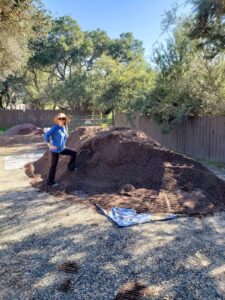
- If using mostly bagged products, do not use "potting soil" alone. Choose a mix of a few different types/brands of potting mixes, raised bed soil, and soil conditioners along with some added compost. See main post for more details and brand recommendations.
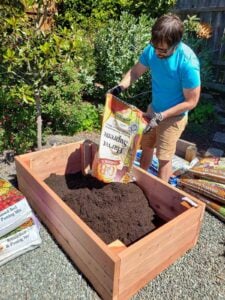
Calculating Bed Size and Soil Volume
- To calculate how much soil you need to fill a raised garden bed, begin by determining the volume of your bed in cubic feet. To do this, simply multiply the width by length by depth in feet (For example: 4’ x 8’ x 1.5′ = 48 cubic feet). Bagged soil usually comes in cubic feet.
- If you’re using bulk soil or compost too, you’ll need to calculate volume in cubic yards. To convert to cubic yards, multiply cubic feet by 0.037037 (or use this converter). Given the example of a 4×8′ by 1.5-foot deep bed used above, 48 x 0.037037 = 1.7 cubic yards of soil is needed to fill it.
How to Fill a Raised Bed
- Add the soil, compost, and aeration addition of choice in layers and mix as you go, so all of the ingredients and final soil will be as evenly mixed as possible. We also like to add worm castings mixed into the top 6 inches of the bed.
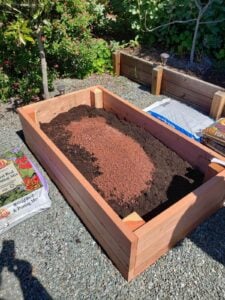
- For smaller projects, we simply used wheelbarrow and shovels. For larger projects, we used a skid steer to load into a UTV to dump into each bed.
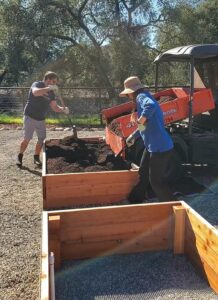
- It's best to fill garden beds with soil all the way to the top – giving the roots as much depth to grow in as possible. When you first water a new bed it will compact and sink down a little too. Depending on how much it sinks, you may want to top it off with another layer of compost or soil.
- For extra-deep beds (over 18" tall) you can offset some of the cost by adding small logs, branches, leaves, mulch, pine needles, or other natural woody organic matter to the very bottom of the bed, and then add at least a foot of good soil and compost on top. I don't recommend this method (hugelkultur) for shallower beds.
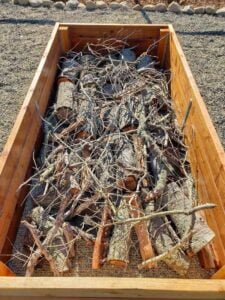
- After filling the bed, sprinkle on some well-balanced, slow-release organic fertilizer and azomite rock dust (recommended) over the top, lightly scratch it into the soil surface, and then water the bed well.
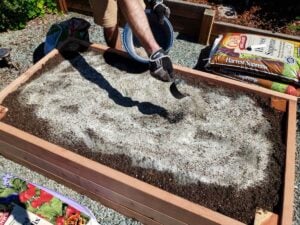
- Don’t forget to cover the soil with a couple inches of mulch. Mulch protects and improves raised bed soil by reducing evaporation, suppressing weeds, and buffering the soil (and plant roots) from temperature swings. We typically use a woody compost as mulch, though straw and leaves are also popular options.

Tried this recipe?Let us know how it was!